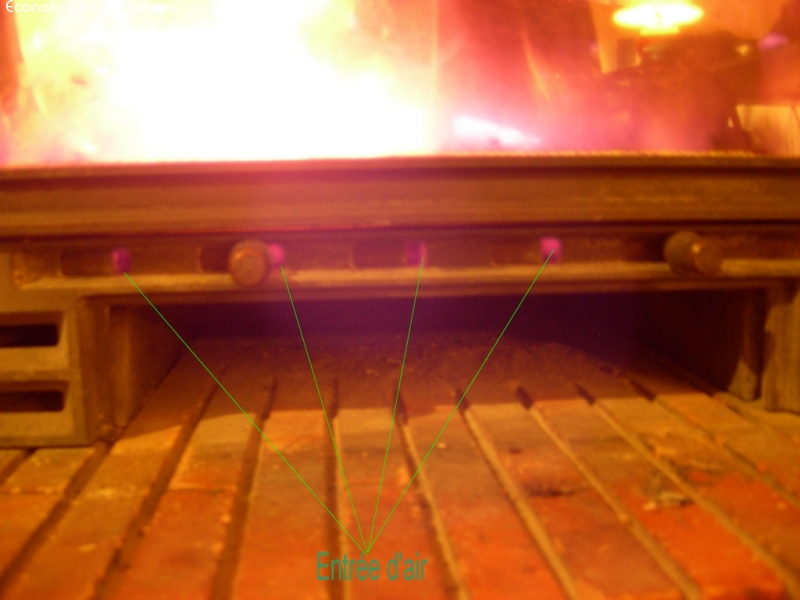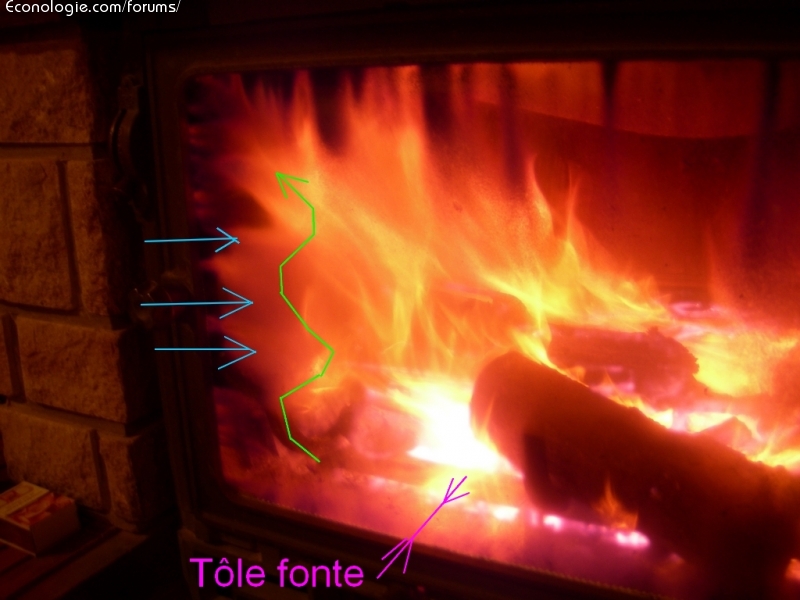Quote:
Poujoulat claims that preheat the combustion air brings a gain up to 10%. So all good. The defect is that the whole apparatus is warmer, everything goes to a much higher T °.
Chui modifying my insert "René Brisach". The modification consists in channeling and heating the "primary" air. Originally, the air enters through 6 small windows adjustable in width with 2 small zippers, and falls directly into the fireplace.

Behind the small windows, the air now passes between the "floor" of the insert and a cast iron sheet over a length of 7 cm and a height of approximately 1 cm, which is exposed directly to the heat of the fireplace.
Now it is possible to completely close the air zippers even with damp wood !!!! The annoying tendency that this insert had to go out very quickly, if not enough air, completely disappeared. The flame is more "calm" and regular over the entire width of the insert.
Soon a measure of the temperature of the air coming in .... yapluka find the Thermocouple that goes well ... The floor of the fireplace taken from below is in the 250 ° C, the sheet of the top can be hotter still ?
Guiding / bringing air closer to the center of the hearth also benefits the consistency / regularity of combustion.
For "secondary" air, there may be this effect with the "clean glass" leak located at the level of the closure of the insert door. Indeed it seems that from a certain closing of the air zippers, the flames take a little of the hair of the beast and start to swirl (green arrow) near the door closure (not very visible on a instantaneous

For the clean glass effect, on the entire right side of the door, it's all clogged with a cord fiberglass ...... and it's cleaner than before!: Mrgreen: By cons, the focus becomes asymmetrical (more flames on the left than on the right
Conclusion, no record of consumption / temperature (disparate mix of dry wood and very wet weather and changing weather + wind) but it seems that this modification guide / heating the primary air improves this insert!



